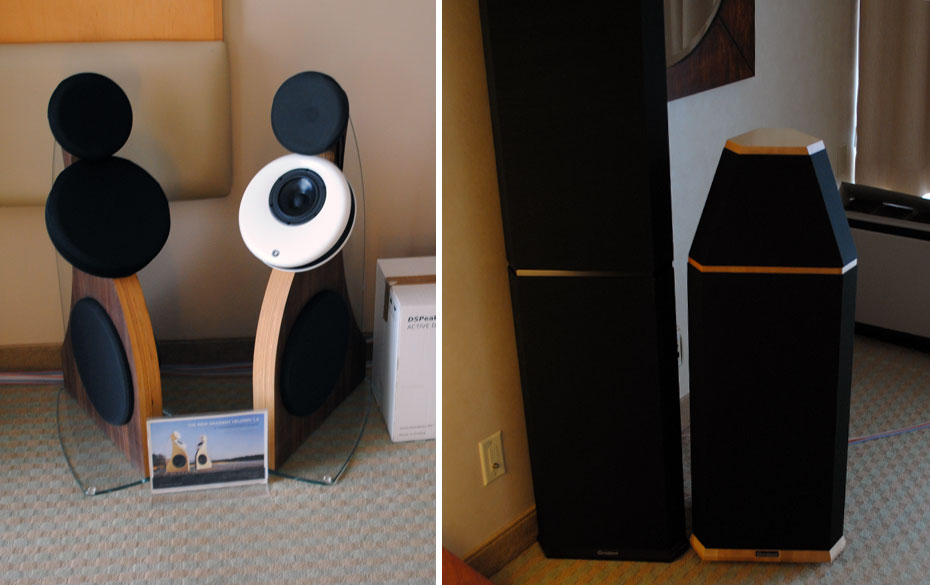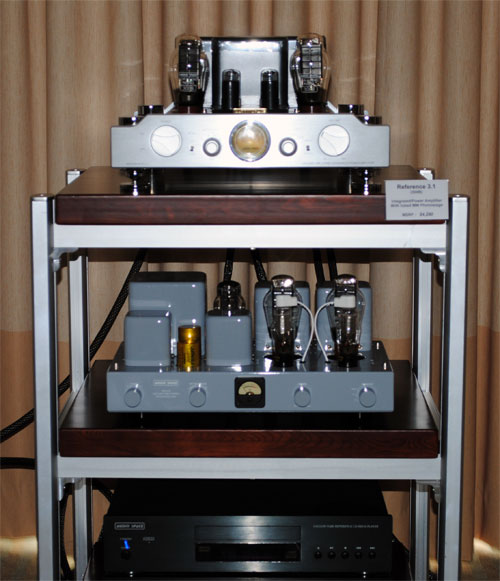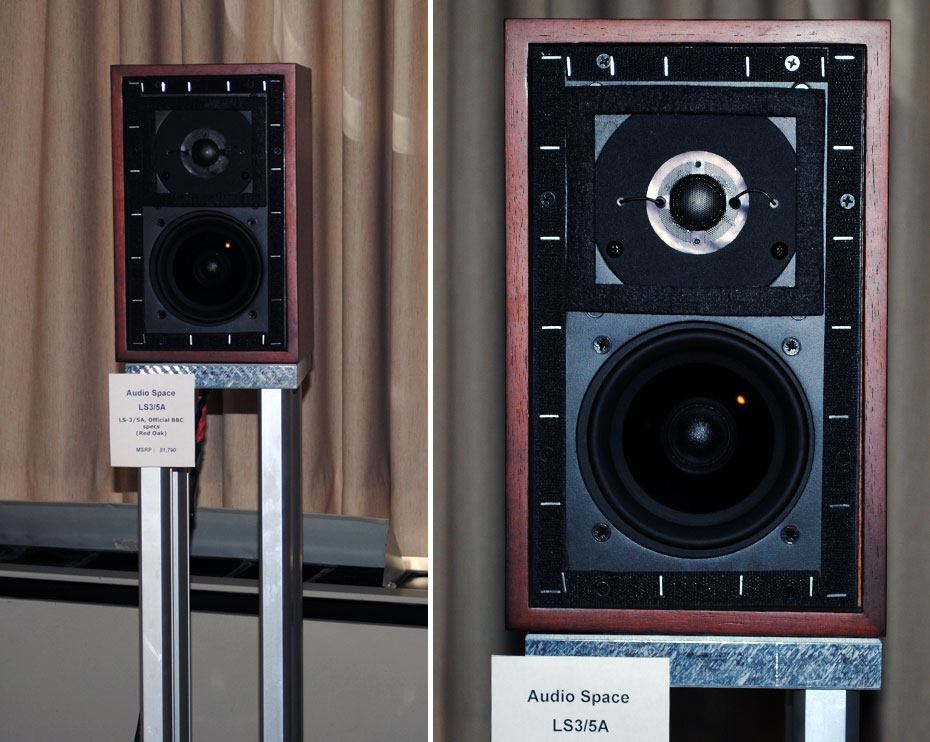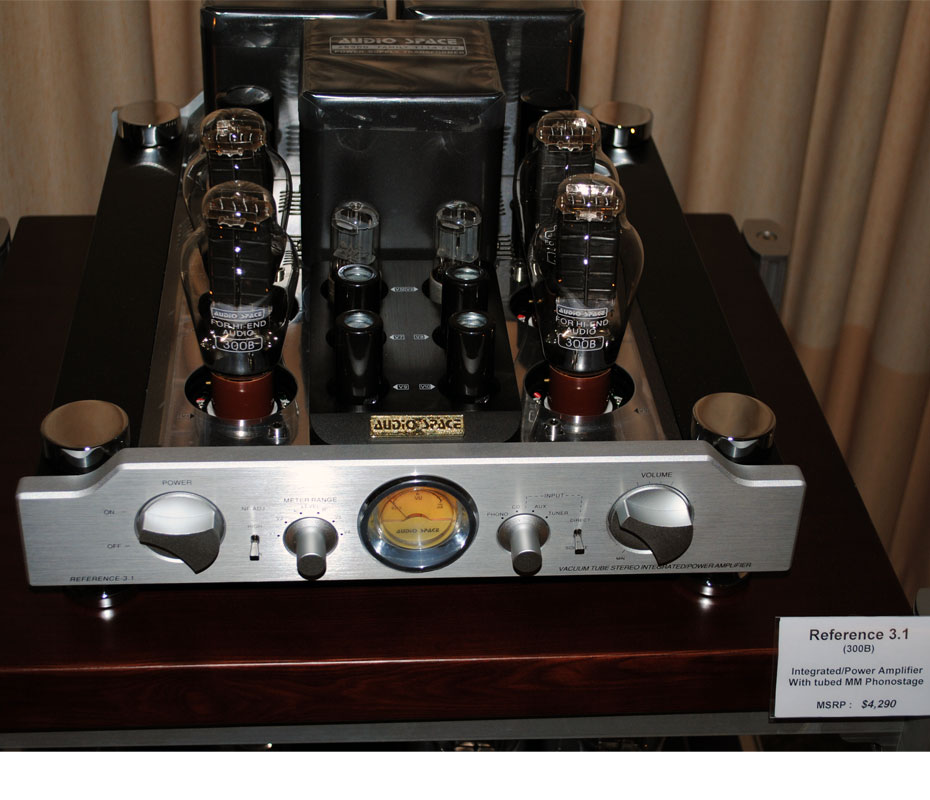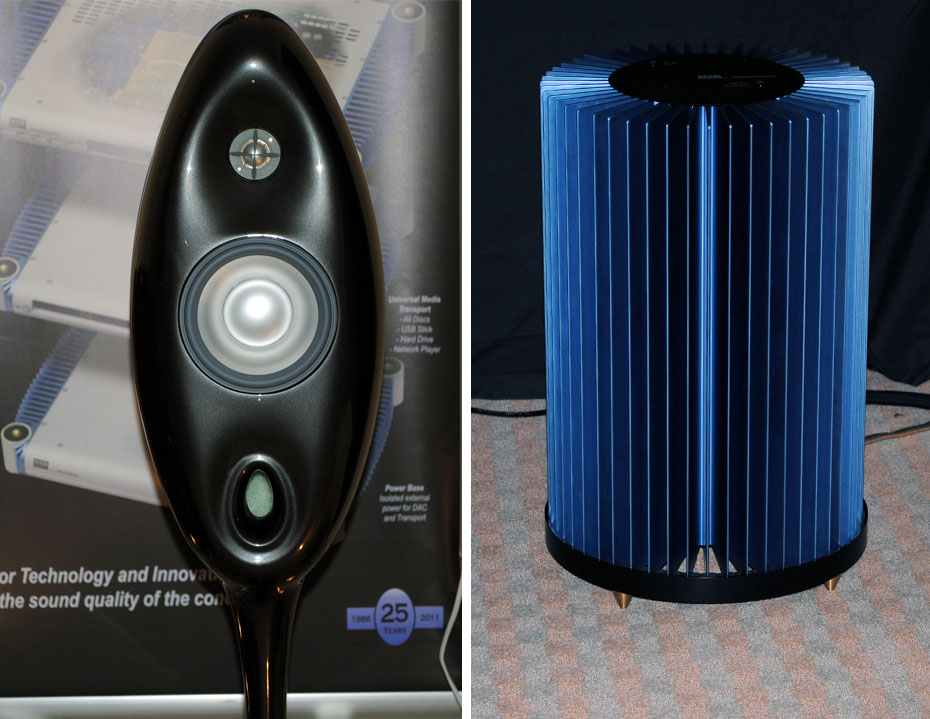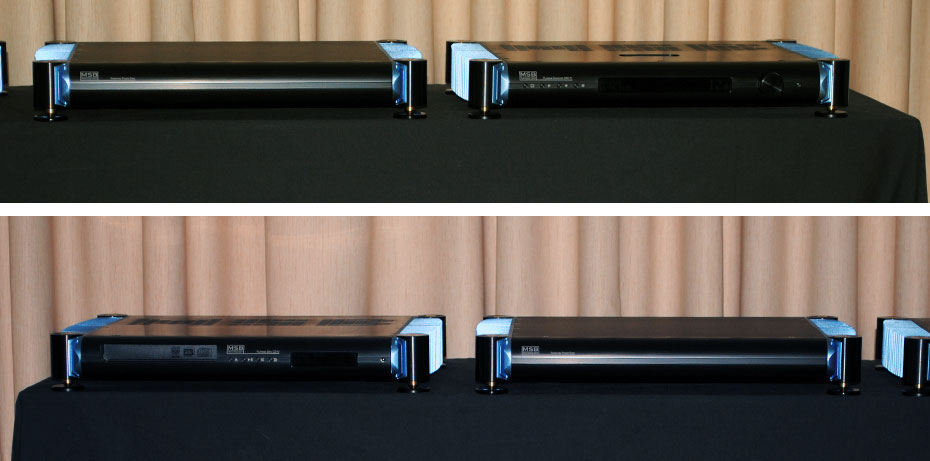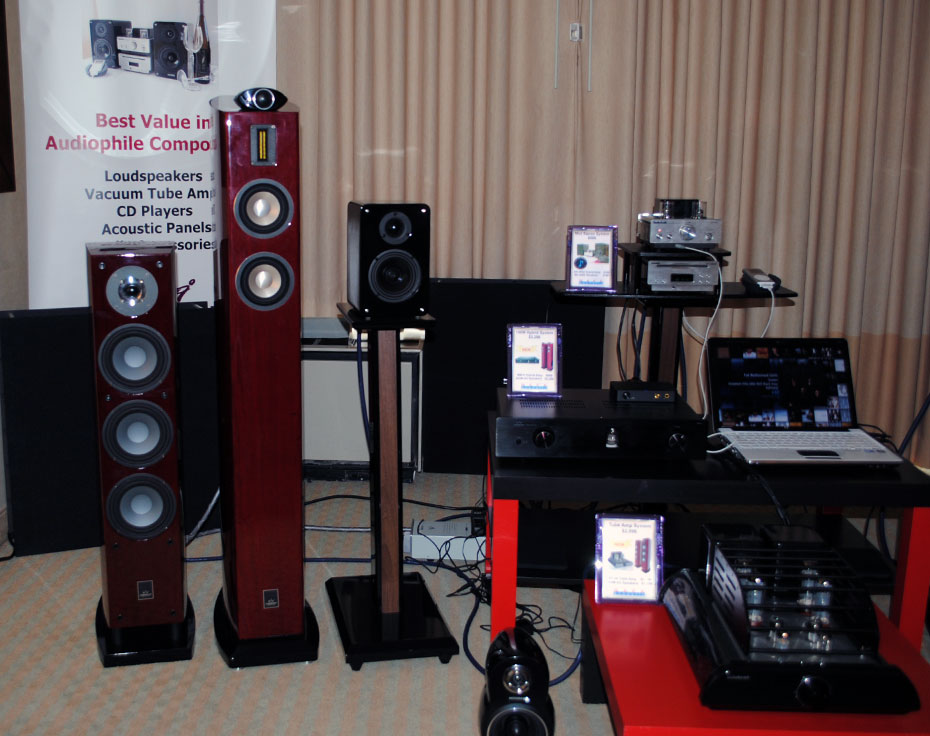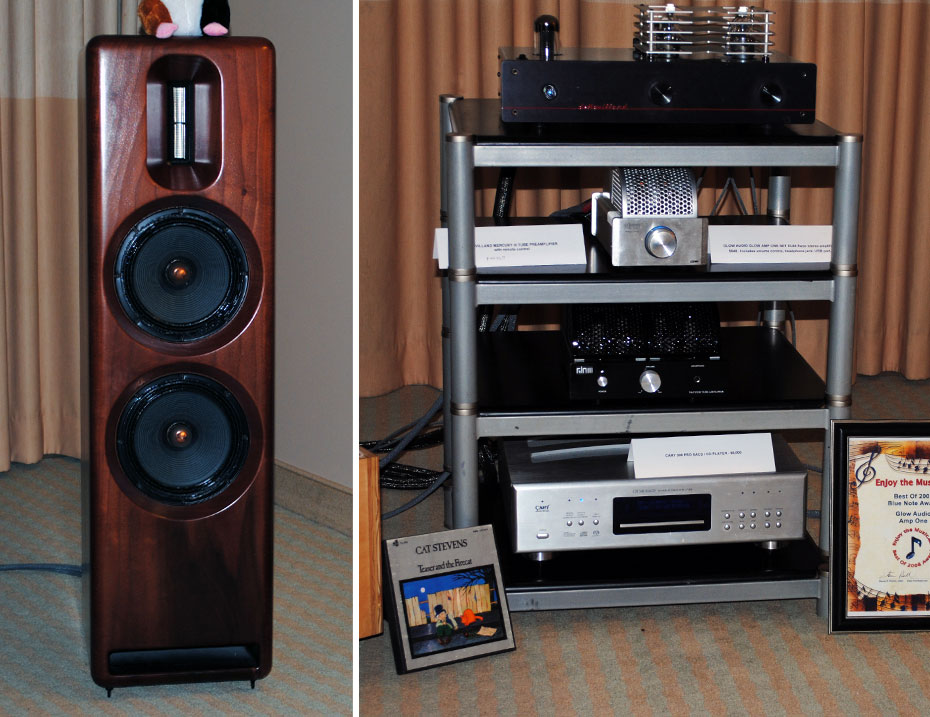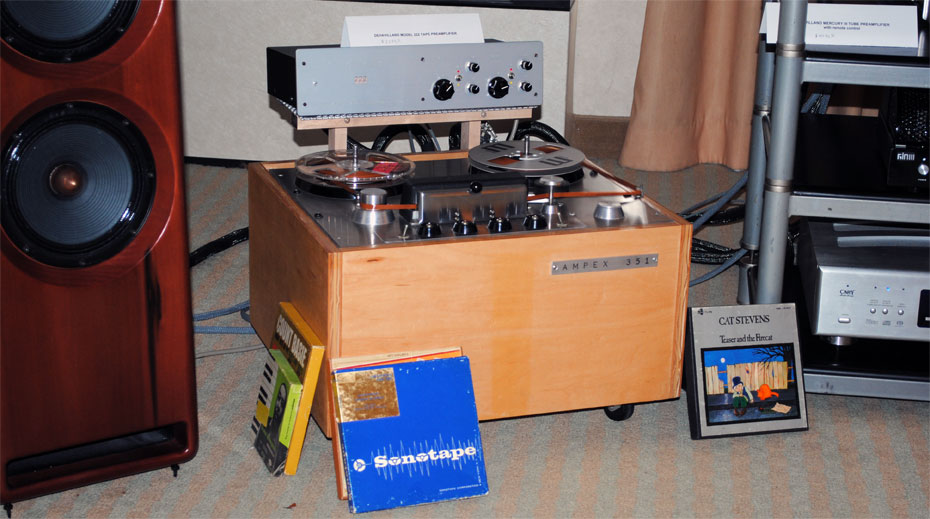Last year at this time, I was one of the intrepid audiophiles that attended the first ever California Audio Show. It was a nice show with a number of flaws not unusual for an inaugural show. The hotel was perhaps the main problem. This year’s CAS was held at a new venue with much improved parking and food service. As some have suggested, some of the upper floor rooms were a bit small and traffic noise could be a problem for some exhibitors. The hotel did provide free transportation from the airport from which one could travel by BART into the city. In addition, many of the rooms had good sound and some had spectacular sound. Most rooms were sponsored by area dealers focusing on a variety of different brands. The rooms on which I reported are listed by the sponsor and in some instances the brands of equipment shown.
Simplifi Audio Distribution/ Gradient/ DSPeaker/ DMN/ PSI Audio
The name Simplifi was thoughtfully chosen to represent the driving force behind the electronics which they carry- limit connections to the extent humanly possible by consolidating amps into speakers and to the extent possible, the preamp and front-end components into one box. The thought seems to be that every power cord is a radiator of electrical and radio frequency noise, and every interconnect, an antennae. The DLS speakers have an additional notable feature. They are provided with a microphone and pink-noise generator which allows an internal chip to equalize response to eliminate room anomalies. The end result was fairly well balanced sound from a reasonably priced speaker ($3,900 for satellites plus sub with EQ and internal amp).
Simplifi was also showing three pairs of unamplified speakers ranging in price from $249 to $499 with an external subwoofer priced at $799. Although each used the same sub, the more expensive model seemed to be more fleshed out and have better bass as well as better resolution and imaging.
In a separate room, Simplifi was displaying the Gradient Resolution Active speakers which were inspired by the Quad ESL’s which have been in continuous production since 1994 . These Gradient speakers are essentially a smaller trapezoidal enclosure topping a woofer tower with a crossover at 110 Hz to a separate subwoofer. These sell for $12,000 and need to be externally bi-amped. The sound was quite good and mated nicely with the room in which they were being shown. Bass, imaging and female voice were all very good, bass was particularly outstanding and did not excite the resonant nodes in the room which is one of the claimed advantages of the radiation pattern. Electronics were provided by Resolution Audio.
GINI Systems / Audio Space
The system was configured around an Audio Space Reference 3.1 integrated amp which uses a pair of 300B tubes on each channel to produce 24 watts of power. This was used to drive Audio Space LS 3/5A speaker (review to come shortly) which is a copy of the famous BBC monitor produced by Rogers in the 1970’s. Other components included the Audio Space CDP 320 transport into an Audio Space DAC US-1. The sound was very crisp and clear. Castanets and other percussions instruments were nicely rendered with good detail and air. Imaging as expected was a strong point. In general the sound was unstrained, non-electronic and transparent.
MSB
Although MSB was originally known for its innovative and often standard setting line of D/A converters, it has more recently branched into other areas of electronics feeling quite rightly that the lessons which they had learned building digital equipment had much to offer in the analog arena. In this instance, the CD-4 transport was driving their proprietary D/A converter, and the MSB electronics were driving Vivid speakers very successfully. The sound was clean in the sense that it was free of any obvious noise artifacts or distortion, and very sweet and pure with excellent resolution.
I sat down with MSB’s Vince Galbo, who spent the next 5 minutes walking me through some of his design choices. It begins with a very aggressive scheme to get all the bits off the disk involving a transport which spins approximately 44X faster than any other on the market which allows the laser to pick each bit up to four times into memory so that it can then compare them to eliminate any anomalies. Coupled with this is a high-precise data clocking. MSB then uses a proprietary network connection over CAT-6 cables in an I2S format to transmit the data to their D/A. Nothing in the D/A is off the shelf. It begins with the largest SHARC available which MSB programs with their own firmware. The D/A modules are built in house using elaborate R to R sine magnitude resistor ladders built from aerospace grade resistors. The output of the D/A is extremely robust so that no preamp is needed, only attenuation. The CD-4 will play 32 bit/ 384 kHz Datwave files. MSB was also using their own mono amps which are class A 200 watts per channel with no global or local feedback. The amps look like finned cylinders. Their shape is strictly a product of the desire to minimize the length of power and signal paths.
The sound of the system was truly outstanding.
Napa Acoustic
Napa Acoustics was showing what were probably three of the lowest priced systems at the show: (1) the Mini Stereo System comprised of the NA-208A Hybrid Amp ($399) and NA-208S Speakers ( $199); (2) their Tube Amp System comprised of the MT-34 Tube Amp ($1199) and BOW-A3 Speakesr ($1699) which were floor standers; and (3) the 150W Hybrid System comprised of the NM-6 Hybrid Amp ($999) and BOW-A2 Speakers ($2299). The first time that I walked by the Napa Acoustics room, I foolishly took one look and went on to the next room, after all is equipment at this price point credible? As it turns out, that was my mistake which was remedied later in the show when I spent some time listening to these systems. At each of these price points, these systems are not only credible but a real value.
Sonist/ deHavilland/ Ampex/ EMM Labs
Year after year, show after show, some things become predictable. One of these is that any room which chooses to utilize deHavilland electronics will have sound that is natural and rich. These pieces are lovingly handcrafted, and the care which goes into them is evident. Much the same could be said for the Sonist speakers which are a two-way using a ribbon tweeter and two woofers. Although the system was shown with the excellent EMM Labs CDSA, it really came to life when source material was ¼’ reel-to-reel tape of Cat Stevens- Teaser and the Firecat played on a deHavilland-modified vintage tube Ampex 351 Tape Machine. I am not sure that I have ever heard this piece better rendered on any system and this recording is a particular favorite of mine (I own a number of different vinyl copies including the pink label Island Records). Stevens’ voice and guitar were extremely rich and natural.
- (Page 1 of 1)


